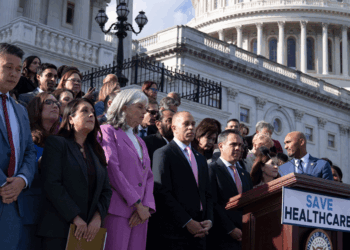A property expert has weighed in on Rachel Reeves’ reported change for stamp duty, which is set to be announced in the autumn Budget. Details of the Chancellor’s autumn Budget will be announced on November 26, and reports of multiple changes being planned by Reeves have been circulating. Among them is a total overhaul of stamp duty, which the Chancellor is rumoured to want to get rid of, replacing it with a property tax.
However, critics have pointed out potential problems with Reeves’ reported plans. A property tax would see landlords paying more in tax, and council tax being replaced by this new payment. One property expert has suggested alternatives that he believes Reeves should consider. Kingsley Napley Private Client Tax Partner Paul Davidoff shared his insights and explained how proposed changes might benefit very few people.
He said: “Most of the options which appear to be up for consideration are looking either to increase the tax burden on those owning or buying higher value properties (in some cases over £1.5m, in others over only £500k), or to spread the cost over the course of the ownership of the property, rather than making it a large one-off up-front cost. The upfront cost of SDLT can be a real barrier to getting onto the housing ladder in the first place, as well as a deterrent to moving house later on.
“A switch from payment of SDLT on purchase to payment on sale or disposal was mooted some time back. It is difficult to see how this really benefits anyone except the first-time buyer, whose SDLT liability is likely to be fairly modest anyway.
“Also, curiously, this would reduce the immediate tax-take for a few years (assuming that those who had already paid SDLT on their purchase will be given relief when they come to sell).
Paul also warned that such a change might make existing mortgages unaffordable for some homeowners. He continued: “Another alleged idea is to scrap SDLT altogether, replacing it with an annual property tax for properties over £500k, with a higher rate for those over perhaps £1m. This might be payable annually, or an amount that simply accrues over time and becomes payable on a sale (which is when CGT would be payable – although main residence relief often applies to residential property).
“Again, some transitional relief would be necessary for those who have already paid SDLT on the purchase of their home. For those with mortgages and who have borrowed as much as they can afford, the addition of a further monthly/annual outgoing might make their mortgage unaffordable. The same might even be true for those without a mortgage, but with limited income, such as those who are retired but with no surplus pension income or savings. Also, under the current regime, no SDLT is payable on a gift or legacy of a property: would the same apply to this tax, and would it be calculated by reference to the value of the property or the amount paid for it?”
“Some reports suggest main residence relief might be limited in some way, possibly for properties over a certain limit (eg £1.5m), or maybe (as in the US) where the gain is more than a certain amount. This would be a major shift in the approach to the taxation of homes in the UK. One would hope that there would be some sort of rebasing here, as some people are planning on using their home as their pension, with a view to downsizing “tax-free”, possibly paying off existing debts and then releasing equity to fund their retirement.
“A much simpler, and more palatable, option would be to adjust the SDLT bands and rates (again!). Whilst no one wants an increase in tax rates, most people pay SDLT only occasionally and making this sort of change would be unlikely to throw any significant spanner in the works of carefully thought-through retirement planning arrangements. The opportunity to pay SDLT by instalments might be welcomed by some (whether or not interest accrues on the unpaid amount of the tax).”

















